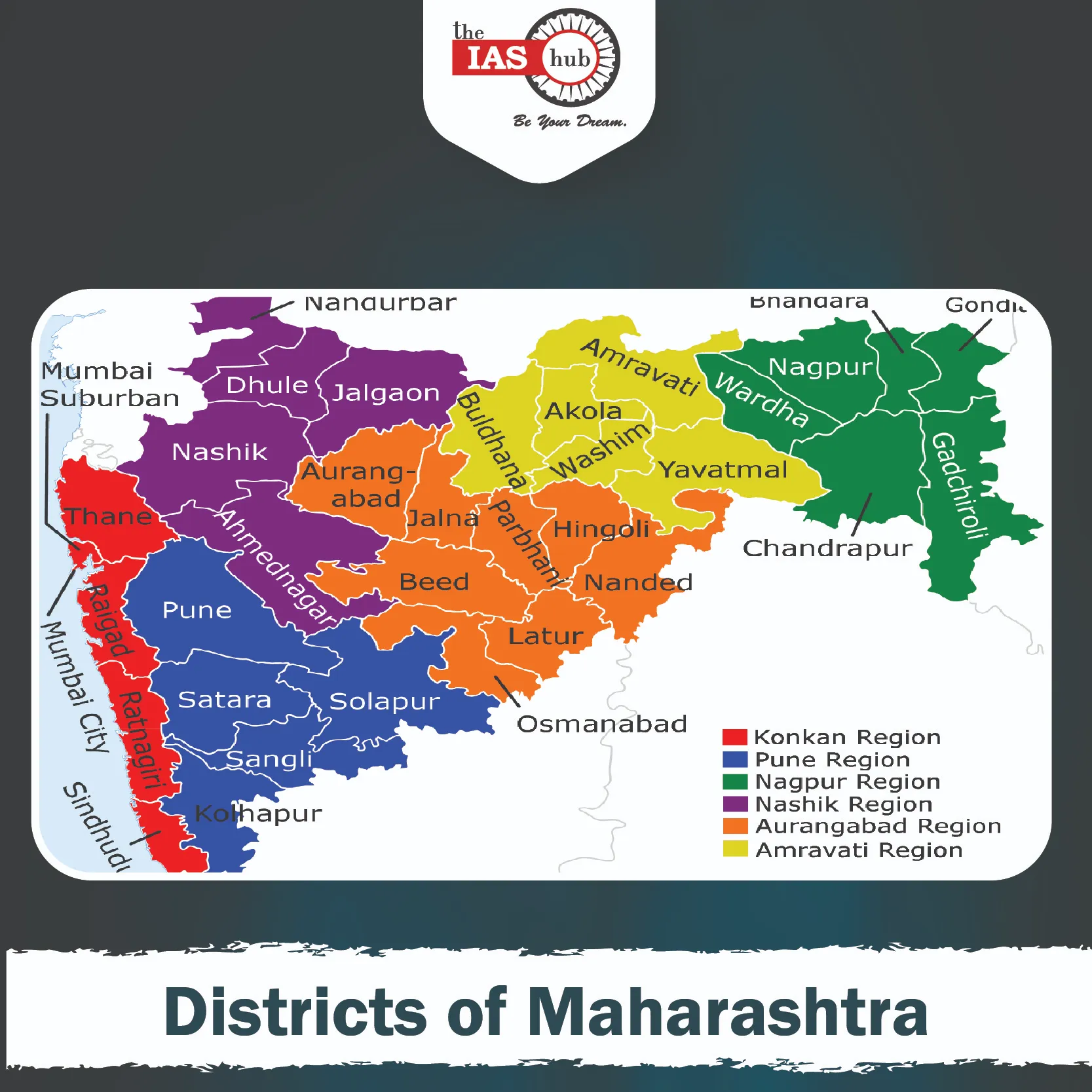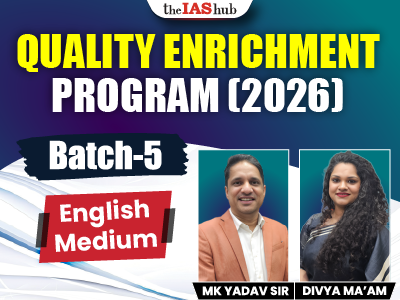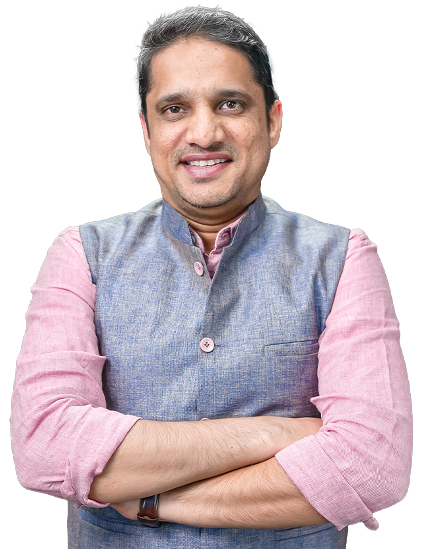Learn about the districts of Maharashtra, their population, and the largest and smallest districts.


Maharashtra, one of India’s largest states, has a diverse administrative structure. Understanding the districts of Maharashtra helps in grasping its economic, cultural, and demographic landscape. As of 2025, the state has 36 districts, each divided into smaller administrative units known as talukas. This article explores how many districts in Maharashtra exist, the number of talukas, and key facts about the largest and smallest districts.
Maharashtra, India’s second-most populous state, was formed on May 1, 1960, from the bilingual Bombay State. It has evolved administratively to meet the growing population and developmental needs. Maharashtra is divided into 36 districts, grouped under six administrative divisions: Konkan, Pune, Nashik, Aurangabad, Amravati, and Nagpur. Detailed District in Maharatra 2025 overview is given below:
| District in Maharashtra 2025 Overview | |
| Aspects | Details |
| Total Districts in Maharatra 2025 | 36 |
| Total Divisions in Maharatra 2025 | 6 |
| Total Area of Maharatra 2025 | 307,713 km² |
| Projected Population of Maharatra 2025 | ~126 million |
| Largest District (Area) of Maharatra 2025 | Ahmednagar (17,048 km²) |
| Smallest District (Area) of Maharatra 2025 | Mumbai City (157 km²) |
| Most Populous District of Maharatra 2025 | Thane (~12 million) |
One might wonder that How many districts in Maharashtra? Maharashtra consists of 36 districts, grouped into six administrative divisions: Konkan, Nashik, Pune, Aurangabad, Amravati, and Nagpur. Each district has a unique identity shaped by geography, economy, and culture. The state government oversees these districts for efficient administration and development.

Here is the updated list of districts of Maharashtra state as of 2025:
| District | Area (sq. km) |
| Ahmednagar | 17,000 |
| Akola | 5,431 |
| Amravati | 12,210 |
| Aurangabad | 10,100 |
| Beed | 10,693 |
| Bhandara | 3,717 |
| Buldhana | 9,671 |
| Chandrapur | 11,443 |
| Dhule | 7,195 |
| Gadchiroli | 14,412 |
| Gondia | 5,234 |
| Hingoli | 4,526 |
| Jalgaon | 11,765 |
| Jalna | 7,718 |
| Kolhapur | 7,685 |
| Latur | 7,157 |
| Mumbai City | 157 |
| Mumbai Suburban | 446 |
| Nagpur | 9,892 |
| Nanded | 10,528 |
| Nandurbar | 5,055 |
| Nashik | 15,530 |
| Osmanabad | 7,569 |
| Palghar | 5,344 |
| Parbhani | 6,214 |
| Pune | 15,642 |
| Raigad | 7,152 |
| Ratnagiri | 8,208 |
| Sangli | 8,578 |
| Satara | 10,480 |
| Sindhudurg | 5,207 |
| Solapur | 14,895 |
| Thane | 4,214 |
| Wardha | 6,310 |
| Washim | 5,150 |
| Yavatmal | 13,582 |

Source- Maps of India
Population distribution varies significantly across the districts of Maharashtra. According to recent estimates, the state has a total population exceeding 125 million. Some districts are densely populated, while others have sparse settlements.
| District | Population |
| Ahmednagar | 4,543,083 |
| Akola | 1,818,617 |
| Amravati | 2,888,445 |
| Aurangabad | 3,701,282 |
| Beed | 2,585,049 |
| Bhandara | 1,200,334 |
| Buldhana | 2,586,258 |
| Chandrapur | 2,204,307 |
| Dhule | 2,050,862 |
| Gadchiroli | 1,072,942 |
| Gondia | 1,322,507 |
| Hingoli | 1,177,345 |
| Jalgaon | 4,229,917 |
| Jalna | 2,002,527 |
| Kolhapur | 3,876,001 |
| Latur | 2,454,196 |
| Mumbai City | 3,085,411 |
| Mumbai Suburban | 9,356,962 |
| Nagpur | 4,653,570 |
| Nanded | 3,361,292 |
| Nandurbar | 1,648,295 |
| Nashik | 6,107,187 |
| Osmanabad | 1,657,576 |
| Palghar | 2,990,116 |
| Parbhani | 1,835,982 |
| Pune | 9,429,408 |
| Raigad | 2,634,200 |
| Ratnagiri | 1,612,672 |
| Sangli | 2,822,143 |
| Satara | 3,003,741 |
| Sindhudurg | 849,651 |
| Solapur | 4,317,756 |
| Thane | 11,054,131 |
| Wardha | 1,300,774 |
| Washim | 1,197,160 |
| Yavatmal | 2,772,348 |
Highest Population District in Maharashtra
Thane is the highest population district in Maharashtra, with over 11 million residents. Its proximity to Mumbai and extensive urbanization contribute to its large population.
Mumbai City is the smallest district in Maharashtra in terms of area. Despite being geographically small, it has a high population density due to urban development.

Ahmednagar is the largest district in Maharashtra by area, covering approximately 17,000 square kilometers. It has a mix of urban and rural regions, with agriculture being a major economic activity.

The five largest districts of Maharashtra by area are:

There are a total of 6 administrative divisions in Maharashtra. Below is the table depicting all of them:
| Administrative Division | Districts Under the Division |
| Konkan Division | Mumbai City, Mumbai Suburban, Thane, Palghar, Raigad, Ratnagiri, Sindhudurg |
| Pune Division | Pune, Satara, Sangli, Kolhapur, Solapur |
| Nashik Division | Nashik, Dhule, Nandurbar, Jalgaon, Ahmednagar |
| Aurangabad Division | Aurangabad, Jalna, Parbhani, Hingoli, Beed, Osmanabad, Nanded, Latur |
| Amravati Division | Amravati, Akola, Buldhana, Washim, Yavatmal |
| Nagpur Division | Nagpur, Wardha, Bhandara, Gondia, Chandrapur, Gadchiroli |
Maharashtra is a dynamic and extremely diverse state. Each district of it processes its own uniqueness as displayed in the table below:
| District | Unique Specialty |
| Mumbai City | Financial capital of India, home to Bollywood, Gateway of India, and Marine Drive. |
| Mumbai Suburban | Houses the Mumbai suburbs, including Bandra, Juhu, and Powai. |
| Thane | Known as the “City of Lakes,” with scenic spots like Yeoor Hills and Tikuji-ni-Wadi. |
| Palghar | Famous for tribal culture, Jawhar Hill Station, and Dahanu’s beaches. |
| Raigad | Historical significance with Raigad Fort, Alibaug beaches, and Murud-Janjira Fort. |
| Ratnagiri | Known for Alphonso mangoes, Ganpatipule Temple, and pristine beaches. |
| Sindhudurg | Famous for Sindhudurg Fort, Malvan beaches, and water sports. |
| Nashik | Wine capital of India, Kumbh Mela, and Trimbakeshwar Temple. |
| Dhule | Known for its agricultural produce and Songir Fort. |
| Nandurbar | Tribal-dominated district with rich cultural heritage and scenic landscapes. |
| Jalgaon | Famous for gold jewelry, bananas, and historical temples like Padmalaya. |
| Ahmednagar | Historical significance with Ahmednagar Fort and Shirdi Sai Baba Temple. |
| Pune | Educational hub, IT center, and cultural landmarks like Shaniwar Wada and Aga Khan Palace. |
| Satara | Known for Kaas Plateau (Valley of Flowers), Sajjangad Fort, and Thoseghar Waterfalls. |
| Sangli | Famous for turmeric production and Miraj’s musical instruments. |
| Kolhapur | Known for Kolhapuri chappals, Mahalaxmi Temple, and Kolhapuri cuisine. |
| Solapur | Famous for textiles, Siddheshwar Temple, and Solapur Chaddar (blankets). |
| Aurangabad | Gateway to UNESCO World Heritage Sites like Ajanta and Ellora Caves. |
| Jalna | Known for its historical forts and agricultural produce. |
| Parbhani | Famous for its cotton production and religious sites like Hazrat Turabul Haq Dargah. |
| Hingoli | Known for its historical temples and agricultural economy. |
| Beed | Famous for its sugarcane production and religious sites like Kankaleshwar Temple. |
| Osmanabad | Known for Tulja Bhavani Temple and historical forts like Naldurg Fort. |
| Latur | Famous for its educational institutions and agricultural produce. |
| Nanded | Known for Hazur Sahib Gurudwara, one of the five Takhts in Sikhism. |
| Amravati | Known for its cotton production and historical sites like Ambadevi Temple. |
| Akola | Famous for its agricultural produce and historical landmarks like Akola Fort. |
| Buldhana | Known for Lonar Crater Lake (meteorite impact crater) and Shegaon’s Gajanan Maharaj Temple. |
| Washim | Famous for its hot springs and religious sites like Washim’s Balaji Temple. |
| Yavatmal | Known for its cotton production and historical forts like Manikgarh Fort. |
| Wardha | Associated with Mahatma Gandhi’s Sevagram Ashram and Paunar Ashram. |
| Nagpur | Known as the “Orange City” for its orange orchards and as the winter capital of Maharashtra. |
| Bhandara | Famous for its rice production and scenic beauty of Ambhora Lake. |
| Gondia | Known for its lush green forests and Nagzira Wildlife Sanctuary. |
| Chandrapur | Famous for Tadoba-Andhari Tiger Reserve and coal mines. |
| Gadchiroli | Known for its dense forests, tribal culture, and Indravati National Park. |
The districts of Maharashtra are further divided into talukas (tehsils or sub-divisions) to streamline governance. As of 2025, Maharashtra has approximately 358 talukas. Each taluka contains multiple villages and towns, serving as the primary unit of rural administration.
| District | District Subdivision | Taluka | |
| Sindhudurg District | Kankavli | Kankavli | |
| Vaibhavwadi | |||
| Devgad | |||
| Malwan | |||
| Sawantwadi | Sawantwadi | ||
| Kudal | |||
| Vengurla | |||
| Dodamarg | |||
| Ratnagiri District | Ratnagiri | Ratnagiri | |
| Sangameshwar | |||
| Lanja | |||
| Rajapur | |||
| Chiplun | Chiplun | ||
| Guhagar | |||
| Dapoli | |||
| Mandangad | |||
| Khed | |||
| Raigad District | Alibaug | Pen | |
| Alibag | |||
| Murud | |||
| Panvel | Panvel | ||
| Uran | |||
| Karjat | Karjat | ||
| Khalapur | |||
| Mangaon | Mangaon | ||
| Tala | |||
| Roha | |||
| Sudhagad-Pali | |||
| Mahad | Mahad | ||
| Poladpur | |||
| Shrivardhan | |||
| Mhasala | |||
| Mumbai City District | |||
| Mumbai Suburban District | Bandra | Kurla | |
| Andheri | |||
| Borivali | |||
| Thane District | Thane | Thane | |
| Kalyan | Kalyan | ||
| Murbad | |||
| Bhiwandi | Bhiwandi | ||
| Shahapur | |||
| Ulhasnagar | Ulhasnagar | ||
| Ambarnath | |||
| Palghar District | Palghar | Palghar | |
| Vasai | Vasai | ||
| Dahanu | |||
| Talasari | |||
| Jawhar | Jawhar | ||
| Mokhada | |||
| Vada | |||
| Vikramgad | |||
| Nashik District | Nashik | Nashik | |
| Igatpuri | |||
| Dindori | |||
| Peth | |||
| Trimbakeshwar | |||
| Kalwan | Kalwan | ||
| Deola | |||
| Surgana | |||
| Baglan | |||
| Malegaon | Malegaon | ||
| Nandgaon | |||
| Chandwad | |||
| Niphad | Niphad | ||
| Sinnar | |||
| Yeola | |||
| Nandurbar District | Nandurbar | Nandurbar | |
| Navapur | Navapur | ||
| Shahada | Shahada | ||
| Talode | Talode | ||
| Akkalkuwa | |||
| Dhadgaon | |||
| Dhule District | Dhule | Dhule | |
| Sakri | Sakri | ||
| Sindkheda | Sindkheda | ||
| Shirpur | Shirpur | ||
| Jalgaon District | Jalgaon | Jalgaon | |
| Jamner | |||
| Erandol | |||
| Dharangaon | |||
| Bhusawal | Bhusawal | ||
| Raver | |||
| Muktainagar | |||
| Bodwad | |||
| Yawal | |||
| Amalner | Amalner | ||
| Parola | |||
| Chopda | |||
| Pachora | Pachora | ||
| Bhadgaon | |||
| Chalisgaon | |||
| Buldhana District | Buldhana | Buldhana | |
| Chikhli | |||
| Deulgaon Raja | |||
| Jalgaon Jamod | Jalgaon Jamod | ||
| Sangrampur | |||
| Malkapur | Malkapur | ||
| Motala | |||
| Nandura | |||
| Khamgaon | Khamgaon | ||
| Shegaon | |||
| Mehkar | Mehkar | ||
| Sindkhed Raja | |||
| Lonar | |||
| Akola District | Akola | Akola | |
| Akot | Akot | ||
| Telhara | |||
| Balapur | Balapur | ||
| Patur | |||
| Murtajapur | Murtajapur | ||
| Barshitakli | |||
| Washim District | Washim | Washim | |
| Malegaon | |||
| Risod | |||
| Mangrulpir | Mangrulpir | ||
| Karanja | |||
| Manora | |||
| Amravati District | Amravati | Amravati | |
| Bhatukali | |||
| Nandgaon Khandeshwar | |||
| Dharni | Dharni | ||
| Chikhaldara | |||
| Achalpur | Achalpur | ||
| Chandurbazar | |||
| Morshi | Morshi | ||
| Warud | |||
| Daryapur | Daryapur | ||
| Anjangaon-Surji | |||
| Chandur | Chandur | ||
| Dhamangaon | |||
| Tiosa | |||
| Wardha District | Wardha | Wardha | |
| Deoli | |||
| Seloo | |||
| Arvi | Arvi | ||
| Ashti | |||
| Karanja | |||
| Hinganghat | Hinganghat | ||
| Samudrapur | |||
| Nagpur District | Nagpur | Nagpur Urban | |
| Nagpur Rural | |||
| Kamptee | |||
| Hingna | |||
| Katol | Katol | ||
| Narkhed | |||
| Savner | Savner | ||
| Kalameshwar | |||
| Ramtek | Ramtek | ||
| Mouda | |||
| Parseoni | |||
| Umred | Umred | ||
| Kuhi | |||
| Bhiwapur | |||
| Bhandara District | Bhandara | Bhandara | |
| Tumsar | |||
| Pauni | |||
| Mohadi | |||
| Sakoli | Sakoli | ||
| Lakhani | |||
| Lakhandur | |||
| Gondia District | Gondia | Gondia | |
| Goregaon | |||
| Salekasa | |||
| Tiroda | Tiroda | ||
| Deori | Amgaon | ||
| Deori | |||
| Arjuni Morgaon | Arjuni-Morgaon | ||
| Sadak-Arjuni | |||
| Gadchiroli District | Gadchiroli | Gadchiroli | |
| Dhanora | |||
| Chamorshi | |||
| Mulchera | |||
| Desaiganj | Desaiganj | ||
| Armori | |||
| Kurkheda | |||
| Korchi | |||
| Aheri | Aheri | ||
| Etapalli | |||
| Bhamragad | |||
| Sironcha | |||
| Chandrapur District | Chandrapur | Chandrapur | |
| Saoli | |||
| Mul | |||
| Ballarpur | |||
| Pombhurna | |||
| Gondpimpri | |||
| Warora | Warora | ||
| Chimur | |||
| Bhadravati | |||
| Bramhapuri | Bramhapuri | ||
| Nagbhid | |||
| Sindewahi | |||
| Rajura | Rajura | ||
| Korpana | |||
| Jiwati | |||
| Yavatmal District | Yavatmal | Yavatmal | |
| Arni | |||
| Babhulgaon | |||
| Kalamb | |||
| Darwha | Darwha | ||
| Digras | |||
| Ner | |||
| Pusad | Pusad | ||
| Umarkhed | |||
| Mahagaon | |||
| Kelapur | Kelapur | ||
| Ralegaon | |||
| Ghatanji | |||
| Wani | Wani | ||
| Maregaon | |||
| Zari Jamani | |||
| Nanded District | Nanded | Nanded | |
| Ardhapur | |||
| Mudkhed | |||
| Bhokar | |||
| Umri | |||
| Loha | |||
| Kandhar | |||
| Kinwat | Kinwat | ||
| Himayatnagar | |||
| Hadgaon | |||
| Mahur | |||
| Deglur | Deglur | ||
| Mukhed | |||
| Dharmabad | |||
| Biloli | |||
| Naigaon | |||
| Hingoli District | Hingoli | Hingoli | |
| Sengaon | |||
| Kalamnuri | |||
| Basmath | Basmath | ||
| Aundha Nagnath | |||
| Parbhani District | Parbhani | Parbhani | |
| Sonpeth | |||
| Gangakhed | |||
| Palam | |||
| Purna | |||
| Sailu | Sailu | ||
| Jintur | |||
| Manwath | |||
| Pathri | |||
| Jalna District | Jalna | Jalna | |
| Bhokardan | |||
| Jafrabad | |||
| Badnapur | |||
| Partur | Ambad | ||
| Ghansawangi | |||
| Partur | |||
| Mantha | |||
| Aurangabad District | Aurangabad | Aurangabad | |
| Kannad | |||
| Soegaon | |||
| Sillod | Sillod | ||
| Phulambri | |||
| Khuldabad | |||
| Vaijapur | Vaijapur | ||
| Gangapur | |||
| Paithan | |||
| Beed District | Beed | Beed | |
| Ashti | |||
| Patoda | |||
| Shirur-Kasar | |||
| Georai | |||
| Ambejogai | Majalgaon | ||
| Wadwani | |||
| Kaij | |||
| Dharur | |||
| Parli | |||
| Ambajogai | |||
| Latur district | Latur | Latur | |
| Ausa-Renapur | Renapur | ||
| Ausa | |||
| Ahmedpur | Ahmedpur | ||
| Jalkot | |||
| Chakur | |||
| Shirur Anantpal | |||
| Nilanga | Nilanga | ||
| Deoni | |||
| Udgir | Udgir | ||
| Osmanabad district | Osmanabad | Osmanabad | |
| Tuljapur | Tuljapur | ||
| Bhum | Bhum | ||
| Paranda | |||
| Kalamb | Washi | ||
| Kalamb | |||
| Umarga | Lohara | ||
| Umarga | |||
| Solapur district | Solapur North | Solapur North | |
| Barshi | |||
| Solapur South | Solapur South | ||
| Akkalkot | |||
| Kurduwadi | Madha | ||
| Karmala | |||
| Pandharpur | Pandharpur | ||
| Mohol | |||
| Malshiras | Malshiras | ||
| Mangalvedhe | Sangole | ||
| Mangalvedhe | |||
| Ahilyanagar district | Ahilyanagar | Nagar | |
| Shevgaon | |||
| Pathardi | |||
| Parner | |||
| Sangamner | Sangamner | ||
| Kopargaon | |||
| Akole | |||
| Shrirampur | Shrirampur | ||
| Nevasa | |||
| Rahata | |||
| Rahuri | |||
| Karjat | Shrigonda | ||
| Karjat | |||
| Jamkhed | |||
| Pune district | Haveli | Pune City | |
| Haveli | |||
| Khed | Khed | ||
| Junnar | |||
| Ambegaon | |||
| Maval | Maval | ||
| Mulshi | |||
| Shirur | |||
| Bhor | Purandhar (Saswad) | ||
| Velhe | |||
| Bhor | |||
| Baramati | Baramati | ||
| Indapur | |||
| Daund | |||
| Satara district | Satara | Satara | |
| Jaoli | |||
| Koregaon | |||
| Wai | Wai | ||
| Mahabaleshwar | |||
| Khandala | |||
| Phaltan | Phaltan | ||
| Maan | |||
| Khatav | |||
| Karad | Patan | ||
| Karad | |||
| Sangli district | Miraj | Miraj | |
| Kavathemahankal | |||
| Tasgaon | |||
| Jat | |||
| Walwa | Walwa | ||
| Shirala | |||
| Khanapur | Khanapur (Vita) | ||
| Atpadi | |||
| Palus | |||
| Kadegaon | |||
| Kolhapur district | Karvir subdivision | Karvir | |
| Panhala | |||
| Shahuwadi | |||
| Kagal | |||
| Ichalkaranji subdivision | Hatkanangale | ||
| Shirol | |||
| Radhanagari subdivision | Radhanagari | ||
| Gaganbawada | |||
| Bhudargad | |||
| Gadhinglaj subdivision | Gadhinglaj | ||
| Chandgad | |||
| Ajra | |||
Maharashtra’s 36 districts play a crucial role in the state’s administration and development. Understanding how many districts in Maharashtra exist, their population, and geographic details helps in various aspects, from governance to travel. Whether looking at the largest district in Maharashtra or the smallest district in Maharashtra, each region has unique characteristics contributing to the state’s diversity.
Also Read: States and Capitals in India
Are you preparing for UPSC 2025? Join IAShub’s UPSC coaching batches to boost your preparation. Enroll now!
Ahmednagar is the largest district in Maharashtra, covering approximately 17,000 square kilometers. It has a mix of urban and rural regions, with agriculture playing a significant role in its economy.
Thane is the most populated district in Maharashtra, with over 11 million residents. Its rapid urbanization and proximity to Mumbai contribute to its high population density.
Maharashtra has approximately 358 talukas as of 2025. These talukas serve as the primary units of rural administration and help streamline governance at the local level.
Mumbai City is the smallest district in Maharashtra in terms of area, covering only 157 square kilometers. Despite its small size, it is highly urbanized and serves as the financial capital of India.


Refine your answer writing skills and elevate your UPSC preparation with personalized support and expert feedback.
Fill out the form to get started with the program or any other enquiries !








Are you dreaming of becoming an IAS officer? Then, IAShub can be your best guide. It is one of the Best IAS Coaching in Delhi. Many students who want to clear the UPSC exam join IAShub for learning. The institute gives both online and offline classes. Their teachers are experienced and helpful. They easily explain every topic. Students also get notes, tests, and tips to do well in the exam.
IAShub is in Delhi and is trusted by many UPSC students. It offers coaching for every part of the UPSC exam – Prelims, Mains, and Interview. The classes are simple and easy to understand. The teachers are experts and guide students in the right way. IAShub is also known for its helpful notes, test series, and answer-writing practice. IAShub is the best coaching in Delhi and also gives UPSC Online Classes. This helps students from any place in India to learn. The online classes are live and also recorded. So, students can watch them anytime. These classes cover the full UPSC syllabus.
Here are some important services provided by IAShub:
The UPSC Civil Services Exam has three parts:
This exam is tough, but with the right guidance, it becomes easy to manage. Students must study smart and stay regular.
IAShub supports students from the beginning to the end. It gives the right books, tests, and notes. The classes are easy to follow, and the teachers are always ready to help. Students get personal doubt sessions too. The test series and answer checking help students learn where they need to do better. Also, free study materials save time and money.
IAShub also guides students during the final stage – the interview. Experts take mock interviews and give useful tips. This full support makes IAShub one of the best IAS coaching in Delhi.
